Blockchain
Why Now is the Perfect Time for Alephium’s Phase 2
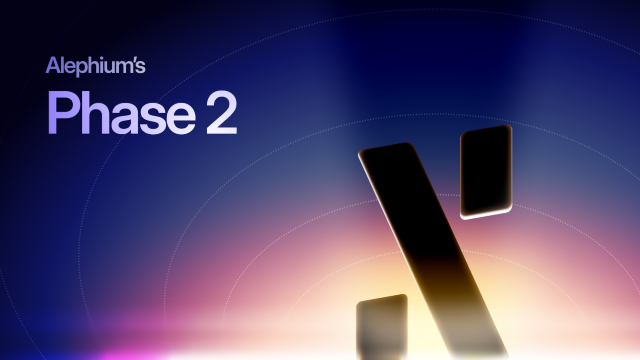
Alephium recently declared a strategic addition, introducing aligned economics through a protocol-owned Core dApp with staking opportunities for its native coin, $ALPH. The announcement was both timely and exciting.
The Swiss-based Proof-of-Work Layer-1 blockchain is led by Founder and Core Developer Cheng Wang. His team has spent years meticulously engineering a Proof-of-Work L1 that is robust, scalable, secure, and even offers a native smart contract environment.
Innovate in haste, or build sustainably on proven foundations. This was a major issue faced by many Layer-1 blockchains. For them, the challenge of solving the trilemma of scalability, security, and decentralization simultaneously almost always led to compromises.
This isn’t the case with Alephium’s “no tradeoffs” approach. First, they solved the trilemma, now they’re going even further, building out a Core “killer” dApp.
Why not two years ago? Why not five years from now? It’s hard to argue that there’s ever a perfect time for innovation, but in Alephium’s case, the decision to launch Phase Two is a confluence of readiness and necessity.
Layer-1s Must Choose To Be Neutral Hosts or Catalysts
Three years ago, many Layer 1 blockchains agreed the best approach was actually to have no approach at all. They decided to be more hands-off than hands-on when it came to application development. Their objectives and mantras were to deliver secure, performant, and decentralized base layers.
A powerful foundation should essentially serve as the perfect tool to attract and acquire new builders. Then, after builders come dApps, after dApps comes an ecosystem, and after an ecosystem come grants, partnerships, DAOs, and UX gains.
The L1 acts as the top of the funnel. Logic suggests that with a solid and attractive base layer, third-party developer communities would then feel inclined to build a series of dApps, DEXs, and other liquidity protocols.
This was all sound in theory, but chains matured faster than adoption. Attracting significant institutional capital and DeFi builders became slow and complex even for EVM chains. This problem was further compounded for non-EVM chains. As others waited, Alephium continued engineering its trilemma-solving infrastructure.
Multiple network upgrades and innovations followed, driving massive performance gains, such as block times reducing from 64s to 16s, and then 8s. Usability also improved, through a combination of dexX, UX, speed, and scalability.
Network improvements all added on Alephium’s Proof-of-Less-Work (PoLW) consensus mechanism for energy efficiency (87% less than Bitcoin), native BlockFlow sharding for throughput, high-security stateful UTXO (sUTXO) model, and native smart contract environment (with custom VM+ language).
While Alephium was building and shipping, the DeFi industry largely defaulted to using EVM-compatible Layer-2 chains. Naturally, this meant new chains did not have to build everything from the ground up or experiment with novel technologies.
The lure of EVM chains, however, led countless new projects to build on the same, sub-optimal tech, inheriting the same vulnerabilities, security pitfalls, design and UX flaws, and tradeoffs as each other.
The Alephium team chose to press ahead, committed to their own vision and desired outcomes. They were justified, as being non-EVM allowed them to avoid many of the pitfalls that come with some EVM chains, such as high gas fees, reentrancy attacks, and the inability to easily upgrade or debug smart contracts.
So, as some chains choose EVM-compatibility, and other L1s opt to take the “hands off” approach, Alephium’s stance is refreshing. They join Hyperliquid and Injective, two projects that have also demonstrated the power of building a “killer dApp” to showcase their chain’s impressive capabilities and attract users.
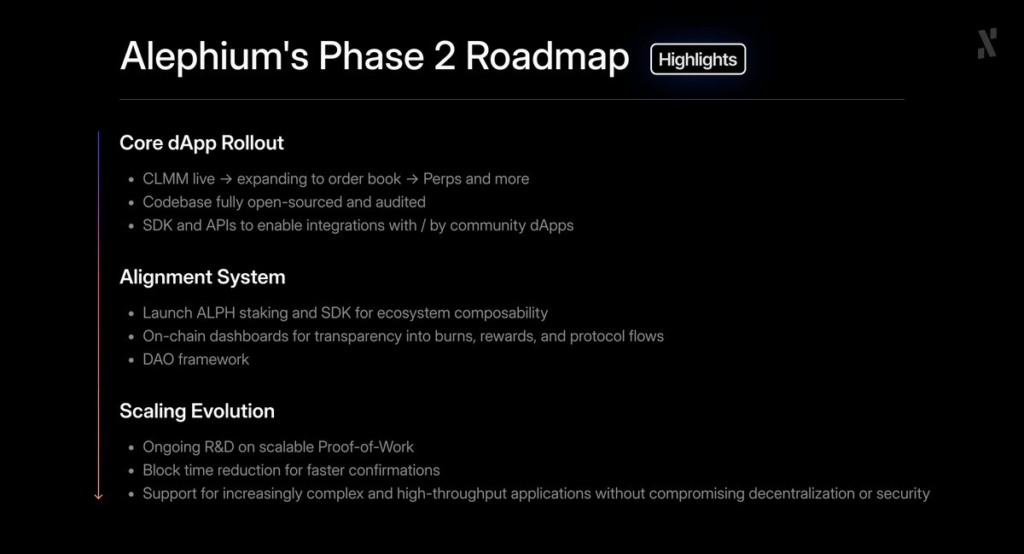
“Build It And They Will Come” May Never Be Enough for Non-EVM Chains
Despite building a custom virtual machine (ALPHred) and its own high-performance programming language (Ralph), both of which prevent common reentrancy and approval exploits at the VM level, Alephium will still have to win over the EVM crowd.
A high level of innovation is now the L1’s biggest adoption challenge, as builders and institutions seek simplicity.
“They said Layer 1 blockchains had to compromise: performance for decentralization, usability for security. Alephium chose a different path.” – Alephium Spokesperson
On-chain hedge managers, capital firms, and other entities with substantial AUM operate on a well-established DeFi playbook, deploying capital and applications exclusively across EVM-compatible chains.
It’s plain to see why they’d take this route. Code written in Solidity can be easily duplicated, audited, and re-deployed with minimal re-engineering, giving institutions the “strong guarantees” and audit trails they require.
Since EVM has become the norm, getting partners and support is much harder for those outside the EVM circle. The problem, however, isn’t getting devs. It’s getting top-tier projects that will attract liquidity to the ecosystem. Many investors lack the confidence required to trust a 3rd party dApp or start their DeFi journey on it.
This led Alephium to start building a protocol-owned dApp, in-house. Some may feel a DEX and $ALPH staking are overdue. Others may appreciate Alephium’s focus on creating the “perfect” base layer first. Both may now be satisfied with the announcement.
Further community encouragement may also come from the news that the Research & Development team at Alephium continues to explore breakthrough innovations that could push the boundaries of scalable PoW even further.
Phase Two is Alephium’s Pivot Towards Self-Sustaining Growth
Recognizing the two-sided dynamic, Alephium shared its “Phase 2: Aligned Economics” article on X. Importantly, they’re not abandoning the “neutral host” philosophy of passive blockchains entirely, but instead aim to introduce a new catalyst for ecosystem growth.
The roadmap involves building out an essential “Core dApp” directly, starting with a Concentrated Liquidity Market Maker (CLMM) DEX.
Alephium’s Core dApp will be a protocol-owned, open-source benchmark, that claims to be robust, audited, and institution-ready. It addresses their stated need for “strong guarantees” from large AUM entities head-on, essentially becoming the necessary proof-of-concept.
As a critical piece of the puzzle, this development aims to remove friction for larger players. It also aims to encourage broader ecosystem involvement from DeFi builders, especially those looking to move away from EVM chains and find a new home with better security, developer experience, and longevity.
For a non-EVM chain like Alephium, which doesn’t have the luxury of duplicating existing EVM smart contracts, the outcome of this in-house development will be crucial.
Why “Aligned Economics” Activates a Self-Reinforcing Loop
Phase 2 plans for aligned economics, connecting token utility directly to real usage and chain adoption. This is something missing with many inflationary Layer 1 models, which have struggled to make the leap from speculation and governance to tangible value and compounding utility.

“The problem L1s face is that in the past they were all about narrative and infrastructure. Right now, I think it’s more about utility. It’s about how the protocol can generate its own revenue. One of the best examples is Hyperliquid. It’s an L1, but one of the most profitable dApps in the space. That profit goes directly to the protocol to buy back the tokens and spin the flywheel.” – Alephium Founder, Cheng Wang
In addition, staking ALPH for xALPH will give participants access to composable DeFi strategies, more governance rights through DAO frameworks, and other ecosystem perks. As such, $ALPH should progress from a largely passive asset into an active component of Alephium’s yield-generating ecosystem.
The design is a self-reinforcing loop. Usage on the Core dApp will generate fees, while these fees will drive both burns (tightening supply) and rewards for ALPH stakers (incentivizing long-term holding). The L1 believes this will initiate a period of experimentation, adoption, and TVL growth.
“There’s a very big opportunity here that allows us to leverage ALPH as the token for the dApp and therefore bring utility and yield and serve as the cornerstone for the ecosystem to build on. In addition, of course, there’s an opportunity to develop primitives that really leverage Alephium’s unique design, ones that are open source and a great foundation for people to build on… The Core dApp will act as a bootstrap, magnet, and catalyst for the broader Alephium ecosystem, making us a more desirable prospect for users, liquidity providers, and builders, as well as institutions and large AUM entities.”” – Maud Bannwart, Alephium COO
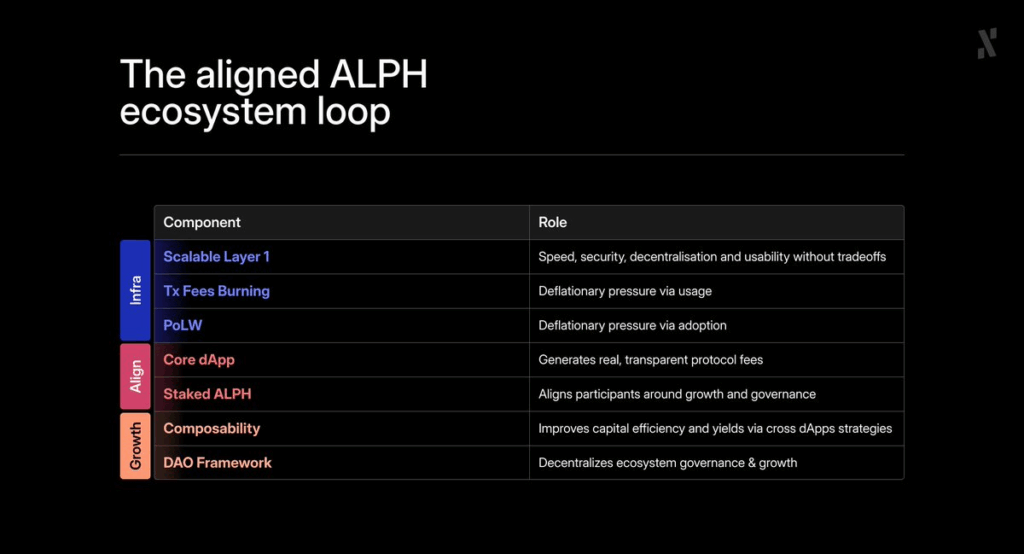
The Perfect Storm of Readiness and Necessity
Firstly, Alephium is ready. It offers battle-tested optimizations for performance, security, and decentralization, with plans for ongoing major network upgrades. Secondly, the market has also matured. Now, Alephium’s Core dApp development reflects these dual realities.
Has Alephium’s moment to leverage its technical superiority for an aligned economic model finally arrived? The key message here appears to be “more utility, less dilution.” This is a practical and pragmatic approach to ecosystem growth and development.
The timing is ideal, as is to be expected of a Swiss blockchain. This is especially true as Circle, Google, and Stripe have all recently announced they are building L1s. We may well be entering “L1 Season” and the start of a new market trend. If that’s the case, Alephium is already one step ahead.

Twitter: https://twitter.com/alephium
Website: www.alephium.org
Telegram: https://t.me/alephiumgroup
Discord: https://discord.gg/XC5JaaDT7z
Docs: https://docs.alephium.org/
Wallets: https://alephium.org/#wallets
Blockchain
PressX Positions Itself as a Decentralized Media Layer for Web3 Communication
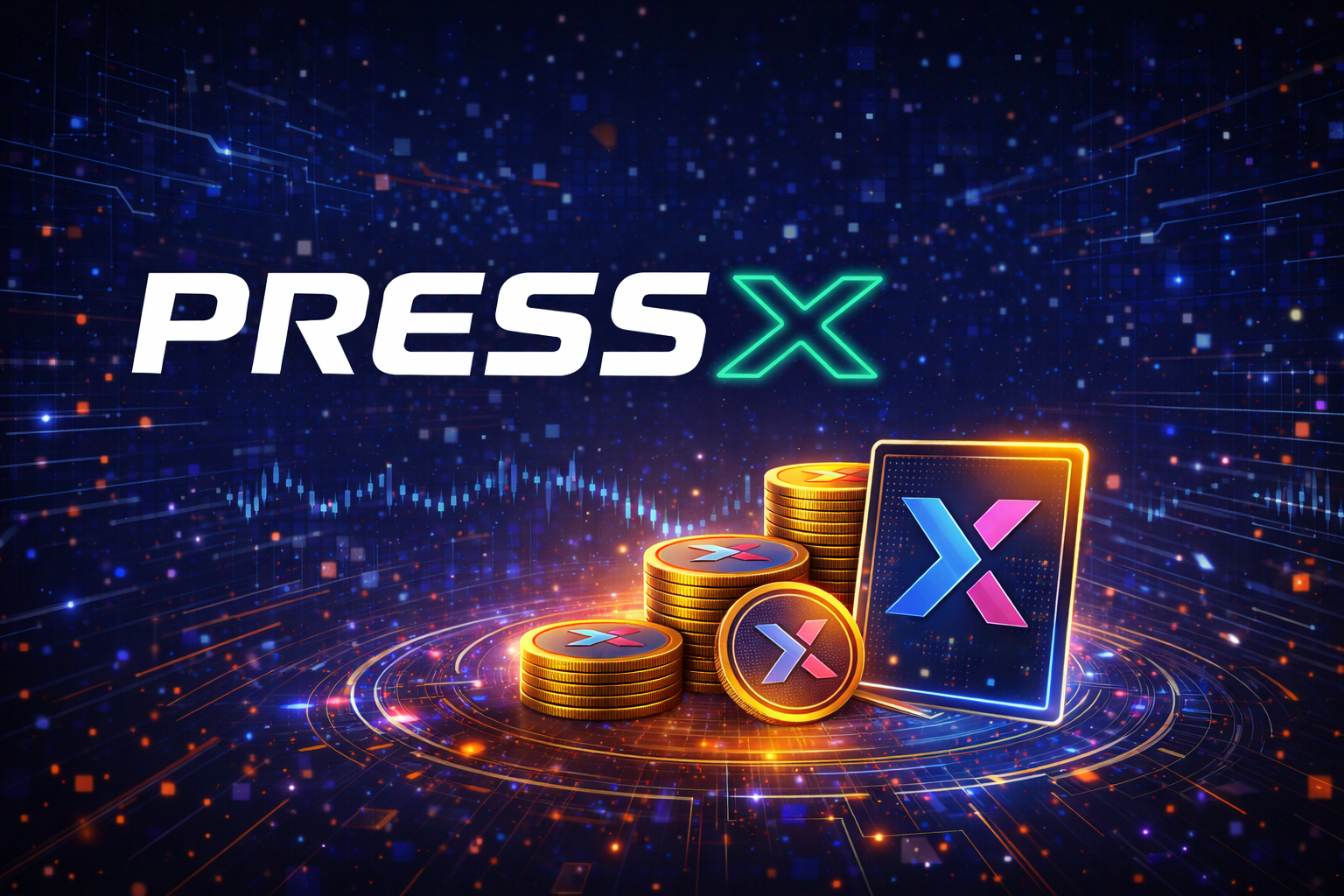
PressX is emerging as a decentralized media and communications protocol designed to address one of Web3’s persistent challenges: how projects distribute verified information without relying on centralized platforms. Built around the PRESSX token, the protocol aims to create an on-chain alternative to traditional press distribution, influencer marketing, and paid media exposure.
As blockchain projects continue to scale globally, demand for transparent, censorship-resistant communication tools has increased. PressX is positioning itself at the intersection of crypto media, decentralized publishing, and token-based incentives.
What Is PressX and What Problem Does It Solve?
PressX is designed as a Web3-native press and content distribution ecosystem. Instead of relying on centralized news outlets or social media platforms, projects can publish announcements, updates, and campaigns directly through the PressX network.
Content distribution on PressX is structured to be verifiable and immutable, reducing the risk of misinformation, paid manipulation, or off-chain content removal. For readers and participants, the system offers clearer visibility into sponsored content versus organic announcements.
This model aims to benefit both early-stage projects seeking exposure and audiences looking for transparent crypto news signals.
How the PRESSX Token Fits Into the Ecosystem
The PRESSX token plays a central role in the platform’s incentive structure. It is used for content promotion, visibility boosting, and access to publishing tools within the ecosystem. Projects may stake or spend PRESSX to distribute announcements, while contributors and validators can be rewarded for engagement, verification, or moderation activities.
By using a tokenized model, PressX attempts to align incentives between publishers, readers, and platform operators. Rather than relying on opaque advertising models, value flows directly through on-chain interactions.
This structure also allows market dynamics to determine which announcements receive attention, rather than centralized editorial decisions.
Decentralized Media as a Growing Web3 Narrative
PressX enters the market at a time when decentralized alternatives to Web2 infrastructure are gaining traction. As social platforms increase moderation, algorithmic filtering, and monetization pressure, many crypto-native projects are exploring permissionless communication layers.
Decentralized finance, NFTs, and DAO governance all depend heavily on timely, trusted information. PressX positions itself as a supporting layer for these sectors by offering a neutral publishing and discovery mechanism.
The protocol’s focus on transparency may appeal to users who want clearer distinctions between marketing, announcements, and independent commentary.
Market Context and Early Positioning
PRESSX remains an early-stage asset, and like many Web3 infrastructure tokens, its adoption will depend on real usage rather than speculation alone. Key factors to watch include onboarding of crypto projects, publisher participation, and sustained on-chain activity.
If PressX succeeds in attracting consistent press flows and community engagement, it could carve out a niche as a decentralized alternative to traditional crypto media distribution.
At the same time, competition in Web3 infrastructure is intense, and long-term relevance will depend on execution, governance design, and ecosystem growth.
Looking Ahead
PressX reflects a broader shift toward decentralizing not just finance, but information itself. As crypto markets mature, demand for transparent communication tools is likely to grow alongside regulation and institutional participation.
Whether PressX becomes a core media layer for Web3 or remains a specialized tool will depend on adoption and trust. For now, it represents an experiment in how crypto projects communicate in an increasingly on-chain world.
Blockchain
Aussie Dollar Token Positions AUD-Backed Stablecoin for On-Chain Payments and DeFi Use

Aussie Dollar Token is emerging as a regional stablecoin initiative designed to bring the Australian dollar onto blockchain networks through a regulated, asset-backed digital token. The project aims to provide a reliable on-chain representation of AUD for payments, settlements, and decentralized finance applications, as demand grows for localized fiat-pegged digital assets beyond USD-based stablecoins.
AUD-denominated stablecoins have historically been underrepresented in the digital asset market. Aussie Dollar Token seeks to address that gap by offering a blockchain-native settlement asset pegged to the Australian dollar, allowing users to transact, hedge, and deploy capital without exposure to crypto market volatility.
How Aussie Dollar Token Works
Aussie Dollar Token is structured as a fiat-backed stablecoin, with each token designed to maintain a one-to-one peg with the Australian dollar. The project emphasizes transparency, reserve backing, and operational compliance as core principles, positioning AUDX as a practical financial instrument rather than a speculative asset.
By operating on public blockchain infrastructure, the token enables near-instant settlement, reduced transaction costs, and interoperability with decentralized applications. This design allows AUDX to function across use cases such as peer-to-peer payments, merchant settlements, treasury management, and DeFi liquidity provisioning.
Why AUD-Based Stablecoins Matter
While USD-pegged stablecoins dominate global liquidity, regional fiat-backed tokens are gaining attention as governments, businesses, and institutions seek localized digital payment rails. For Australian users and Asia-Pacific markets, an AUD-denominated stablecoin reduces currency conversion friction and simplifies cross-border transactions involving Australian businesses.
AUDX also offers a potential hedge against foreign exchange exposure for users operating primarily in AUD, making it particularly relevant for enterprises, fintech platforms, and Web3 services targeting the Australian economy.
DeFi and Payments Expansion Strategy
Aussie Dollar Token is positioned to support decentralized finance activity by serving as a stable settlement asset for lending, trading, and yield strategies. In DeFi environments, stablecoins are critical for liquidity pools, collateral frameworks, and on-chain accounting. An AUD-native option expands these capabilities beyond USD-centric ecosystems.
In payments, the token’s utility lies in its ability to move value quickly without relying on traditional banking rails. This could support use cases ranging from payroll and remittances to merchant payments and digital commerce.
Regulatory Focus and Market Positioning
Stablecoin regulation remains a central issue globally, and AUDX’s framework reflects a growing emphasis on compliance, reserve transparency, and issuer accountability. As regulators scrutinize stablecoin issuers more closely, projects aligned with clear governance structures may gain an advantage in institutional adoption.
The presence of Aussie Dollar Token in the broader stablecoin landscape highlights a shift toward multi-currency digital finance, where localized fiat tokens coexist alongside dominant USD-based assets.
As adoption of blockchain-based payments accelerates, AUD-denominated stablecoins like AUDX could play an important role in bridging traditional finance with decentralized infrastructure, particularly within the Australian and Asia-Pacific markets.
Blockchain
Bearly Legal (BEARLY) Draws Attention as Meme Coin Leans Into Community and Branding

Bearly Legal (BEARLY) is gaining visibility in the crypto market as meme-driven assets continue to evolve beyond short-lived hype cycles. While many meme coins struggle to maintain relevance after launch, Bearly Legal is positioning itself around strong branding, humor-based identity, and active community participation—key ingredients that have historically supported longer-lasting meme ecosystems.
The project taps into the growing demand for personality-driven tokens that prioritize cultural appeal alongside trading activity. As interest around BEARLY increases, traders are closely watching whether the token can sustain engagement during periods of broader market volatility.
Community Momentum Fuels Bearly Legal Activity
Community engagement remains one of the strongest indicators of survival for meme coins, and Bearly Legal appears to be building steadily on that front. Social participation and holder interaction suggest that BEARLY is attracting users who are invested not just in price action, but also in the project’s identity and messaging.
Brand recognition plays a critical role in this phase. Bearly Legal’s distinctive name and visual theme help it stand out in a crowded meme coin landscape where differentiation is often minimal. Projects that succeed in establishing a recognizable narrative early tend to maintain attention longer than those relying solely on short-term speculation.
Market participants note that meme coins with strong communities often experience more resilient trading behavior during market pullbacks, as holders are less likely to exit purely based on short-term price fluctuations.
Bearly Legal’s Position in the Meme Coin Market
The meme coin sector remains one of the most competitive areas of the crypto market, with new tokens launching daily. In this environment, Bearly Legal’s focus on consistency and engagement may help it avoid the rapid decline that affects many similar projects.
Rather than presenting itself as a complex DeFi protocol, BEARLY leans into cultural relevance and community-led growth. Historically, meme coins that embrace this model have shown the ability to regain momentum during bullish market phases, particularly when retail participation increases.
However, like all meme-based assets, Bearly Legal remains highly sensitive to sentiment. Price movements are driven largely by volume, community enthusiasm, and broader crypto market conditions rather than traditional fundamentals.
Risks and Market Considerations
Despite growing interest, Bearly Legal carries the inherent risks associated with meme coins. Liquidity shifts, rapid sentiment changes, and speculative trading behavior can lead to sharp price swings in either direction.
Sustained growth will likely depend on the project’s ability to continue expanding its holder base while avoiding excessive hype cycles that often precede sharp corrections. Market observers are also watching how the project adapts as regulatory scrutiny across the crypto space continues to increase.
As with similar assets, long-term relevance for BEARLY will depend on maintaining community trust, clear communication, and consistent engagement during both active and quiet market periods.
What’s Next for Bearly Legal (BEARLY)
Bearly Legal reflects a broader trend within crypto, where meme coins aim to become recognizable digital communities rather than disposable trading instruments. Whether BEARLY can translate its branding and community momentum into lasting relevance remains to be seen.
For now, the token remains on traders’ radar as market participants track participation levels, trading volume, and sentiment shifts. As the meme coin sector continues to mature, Bearly Legal’s performance may offer insight into how community-first projects navigate an increasingly competitive crypto environment.
-

 Crypto3 years ago
Crypto3 years agoCardalonia Aiming To Become The Biggest Metaverse Project On Cardano
-
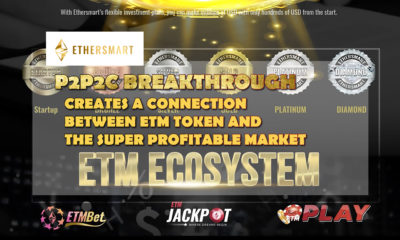
 Press Release5 years ago
Press Release5 years agoP2P2C BREAKTHROUGH CREATES A CONNECTION BETWEEN ETM TOKEN AND THE SUPER PROFITABLE MARKET
-

 Blockchain5 years ago
Blockchain5 years agoWOM Protocol partners with CoinPayments, the world’s largest cryptocurrency payments processor
-

 Press Release5 years ago
Press Release5 years agoETHERSMART DEVELOPER’S VISION MADE FINTECH COMPANY BECOME DUBAI’S TOP DIGITAL BANK
-
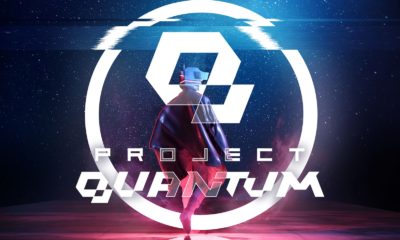
 Press Release5 years ago
Press Release5 years agoProject Quantum – Decentralised AAA Gaming
-

 Blockchain5 years ago
Blockchain5 years agoWOM Protocol Recommended by Premier Crypto Analyst as only full featured project for August
-

 Press Release5 years ago
Press Release5 years agoETHERSMART DEVELOPER’S VISION MADE FINTECH COMPANY BECOME DUBAI’S TOP DIGITAL BANK
-

 Blockchain6 years ago
Blockchain6 years ago1.5 Times More Bitcoin is purchased by Grayscale Than Daily Mined Coins






